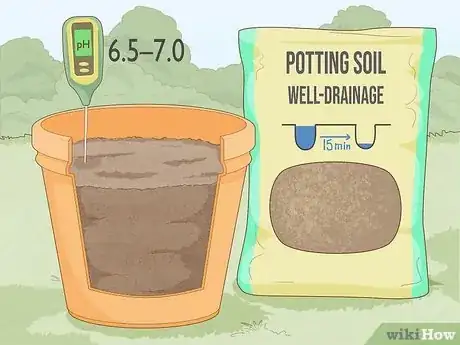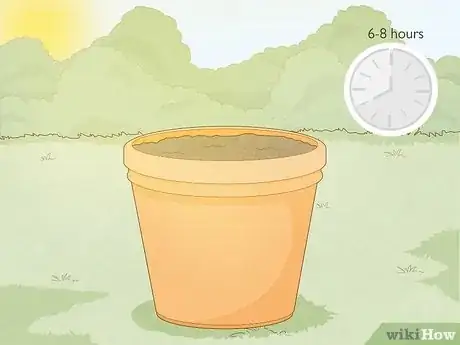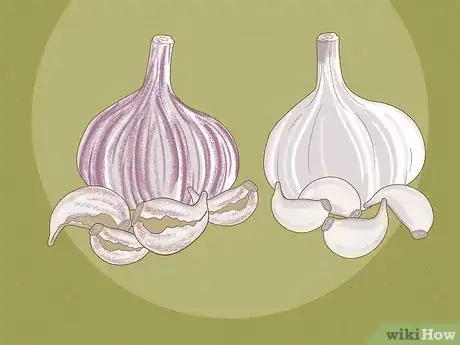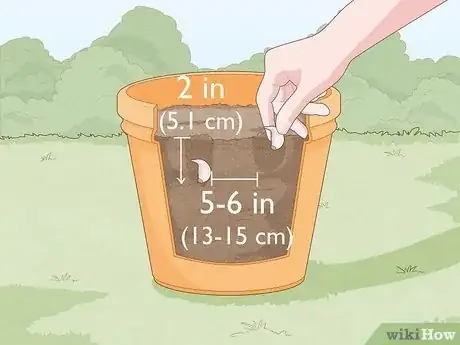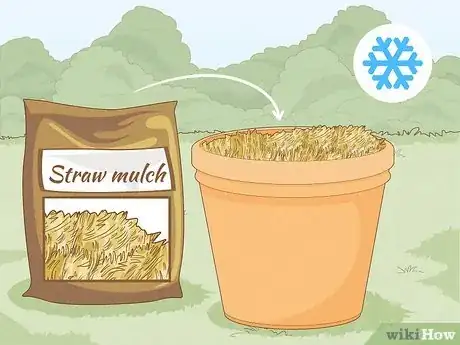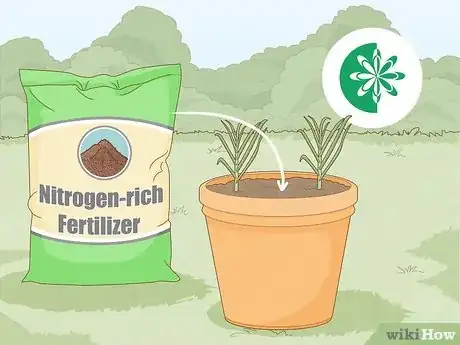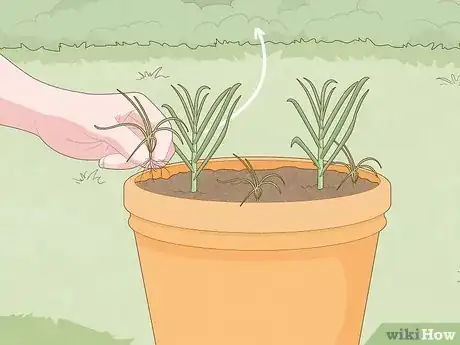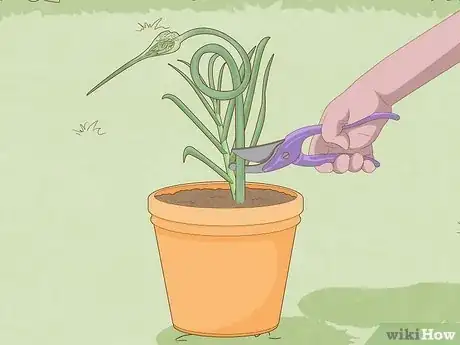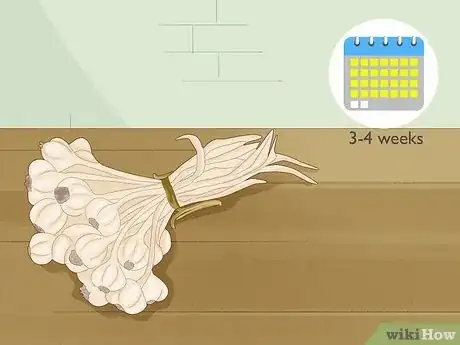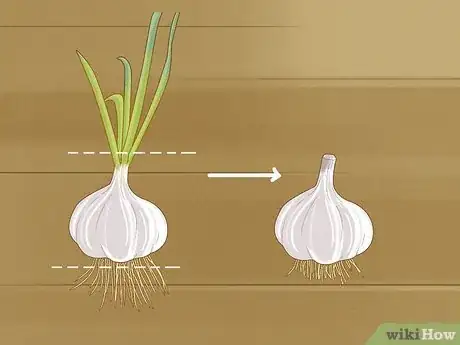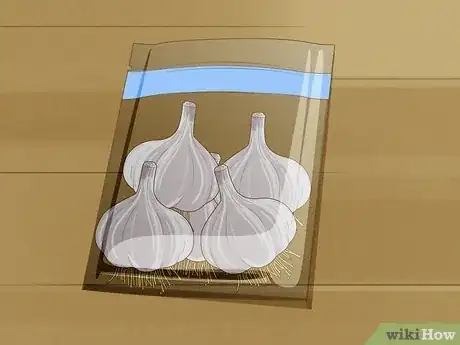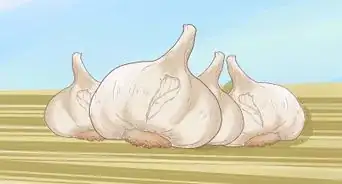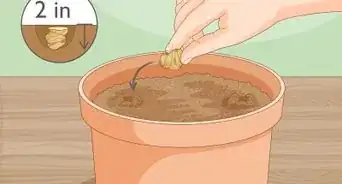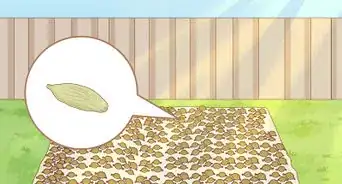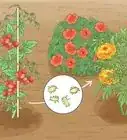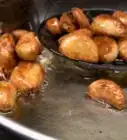This article was co-authored by Andrew Carberry, MPH and by wikiHow staff writer, Hunter Rising. Andrew Carberry is a Food Systems Expert and the Senior Program Associate at the Wallace Centere at Winrock International in Little Rock, Arkansas. He has worked in food systems since 2008 and has experience working on farm-to-school projects, food safety programs, and working with local and state coalitions in Arkansas. He is a graduate of the College of William and Mary and holds a Masters degree in public health and nutrition from the University of Tennessee.
There are 19 references cited in this article, which can be found at the bottom of the page.
wikiHow marks an article as reader-approved once it receives enough positive feedback. This article received 91 testimonials and 86% of readers who voted found it helpful, earning it our reader-approved status.
This article has been viewed 1,945,449 times.
Don’t you wish that you could have cloves of garlic at your fingertips whenever you needed it for a recipe? Even if you’re a total amateur at gardening, garlic is a really easy herb that you can easily start growing at home. Before you start planting any old clove of garlic in your kitchen, there are a few things to keep in mind. When you finish reading, you’ll know how to grow and harvest a fresh supply of garlic you can use throughout the year.
Things You Should Know
- Plant garlic in the fall before the last frost so you can harvest it in the following summer. You can grow it in the ground or in a container.
- Sow cloves of seed garlic 2 inches (5.1 cm) deep in well-draining soil in a spot that gets at least 6 hours of sunlight a day.
- Water garlic once a week during the growing season in the spring and summer.
- Dig up and harvest your garlic in the summer when the bottoms of the stems turn yellow. Let the bulbs dry out for 3–4 weeks before using the cloves.
Steps
Planting
-
1Plant your garlic cloves in the fall 6–8 weeks before the first frost. Since garlic produces bigger bulbs when it goes through a cold period, plan on starting them in the early fall to harvest them the following summer. Check the expected first frost date for your area by typing your location into an online calculator. Make sure you plant your garlic before then so it has a chance to establish some roots and shoots before the temperatures start to cool down.[1]
- Already had the first frost in your area? Try planting garlic in the spring instead! Just keep the bulbs in your fridge for at least 8 weeks and plant them when you can easily work the soil.
-
2Find a spot with well-draining, neutral soil. Run a soil test in the spot where you want to plant your garlic. If your soil’s pH isn’t between 6.5–7.0, then amend the soil to adjust the pH accordingly. Also, test if your soil has good drainage and that it isn’t compacted or full of clay.[2]
- To check your soil drainage, dig a 12 in (30 cm) hole in the ground and filling it with water. Once the water drains, fill it again and measure the depth. After 15 minutes, measure the change in water level and multiply it by 4. If the drainage is 1–3 inches (2.5–7.6 cm), then your soil is perfect for garlic.[3]
- Alternatively, grow your garlic in a pot indoors. Just use a container that’s at least 8 in (20 cm) deep filled with a standard potting mix.
Advertisement -
3Pick a planting location that gets 6–8 hours of sunlight a day. Check the planting site that you picked out to ensure that it gets direct sunlight throughout most of the day. It’s okay if the spot is shady for a few hours during the day as long as there’s mostly sunshine.[4]
-
4Choose seed garlic to plant. Hardneck garlic is more hardy through the winter and easy to peel, but it doesn’t have as long of a shelf-life. Softneck garlic has a longer shelf life than hardneck varieties and they’re what you’d usually find in a grocery store. Break apart the individual cloves from the bulb right before you want to plant them so they don’t dry out.[5]
- Common hardneck varieties include Music (pungent but not too hot), Early Italian (mild and excellent roasted), or German Red (hot and on the spicier side).
- Try softneck varieties like California Early White (mild and versatile), Silver White (moderate flavor and keeps well in storage), or Lorz Italian (strong, zesty flavors).
- Choose large, clean garlic bulbs since they’ll have the best chances of growing.
- Avoid planting garlic that you bought from the grocery store since it usually isn’t suited to grow in your area. You can buy seed garlic online or ask local farmers or growers if they have any cloves available.
-
5Sow the cloves 2 in (5.1 cm) deep with the pointed ends up. Dig small holes for each clove in your soil with a trowel, putting them 5–6 inches (13–15 cm) apart. Set the garlic clove into the hole so the flat end where the roots form is on the bottom and the pointed top end is face up.[6] Loosely cover the cloves with soil and water them immediately.[7]
-
6Cover the seeds for winter with 3–4 in (7.6–10.2 cm) of straw mulch. Spread the mulch in an even layer over your entire planting area to help protect the cloves from cold temperatures. Leave the mulch over your garlic throughout the entire winter. Once there isn’t a risk of any snow or frost in the springtime, rake the mulch off of where the cloves are planted so they can sprout.[8]
- It’s okay to leave the mulch between the spots where you planted garlic to help prevent weeds and retain moisture.
- Keep track of where your garlic is by putting garden stakes in the ground at each planting site.
- Avoid using hay to cover your garlic since it could contain weed seeds.
Caring for Garlic
-
1Water your garlic once a week starting in the spring. Begin watering your garlic after the last frost in your area at the beginning of the growing season. Give your garlic at least 1 inch (2.5 cm) of water every week. Once the leaves start to turn yellow in the middle of the summer, stop watering to prevent the bulbs from rotting or splitting.[9]
- If it rained during the week, you may not need to do any extra watering for your garlic. Use a rain gauge to measure how much water your plants have gotten so you don’t accidentally overwater them.
-
2Apply nitrogen-rich fertilizer in the early and late spring. Garlic takes a lot of nitrogen to grow large cloves, so use blood meal, chicken manure, or artificial fertilizer. Side-dress your fertilizer by applying it around the base of your garlic without actually getting it on the stems. Do one application at the start of the growing season and another when the garlic sprouts are 4–6 inches (10–15 cm) tall.[10]
- Check the soil nutrients before adding any fertilizers. If the nitrogen levels are already around 440 ppm, then you don’t need to add fertilizer.[11]
-
3Pull weeds around your garlic when you see them. As soon as you see other plants sprouting up near your garlic, put on a pair of gardening gloves and pull the weed out of the ground. If some of the roots are still stuck in the soil, then gently lift them out with a trowel.[12]
- Try applying a 2 in (5.1 cm) layer of mulch around your garlic, but don’t let it touch the stems since it could lead to rot.
-
4Cut the flower stems off of hardneck garlic before they uncurl. Look for the main stem in the center of a hardneck garlic stalk with the curled top, known as the scape. Use a pair of garden trimmers to cut the scape off of the plant. That way, your garlic will put its energy into growing larger cloves instead of a flower.[13]
- Chop the scape and use it in your cooking for more aromatic notes. Try tossing them in a stir fry or sauce for an added boost of flavor.
Harvesting & Storing
-
1Harvest your garlic when the lower third of the leaves turns yellow. Garlic planted in the fall or in the spring will be ready by the middle of summer. Check the stalks for differently colored leaves that have withered up to see if the bulbs are ready.[14]
- Harvesting your garlic early will end up giving you smaller and less flavorful cloves.
- Avoid watering your garlic after it starts to turn yellow since the bulbs could rot or split.
-
2Dig up the garlic with a trowel or garden fork. Rather than pulling the garlic straight out of the ground, loosen the dirt around the bulb with your trowel or fork. Gently work the soil until you can easily pull the garlic out. Brush off any loose or clumped soil around the bulb.[15]
- Yanking the garlic out of the ground could damage the cloves before you have a chance to use them.
-
3Cure the garlic in a warm, dry place for 3–4 weeks. Choose a spot like a basement, shed, barn, or pantry where the papery skin around the garlic can dry out. Store the garlic in mesh bags or spread them out evenly on a baking tray so they can dry. Keep the roots and leaves attached to the bulb. Leave the garlic for at least 3 weeks so they can fully cure.[16]
-
4Cut off the stems and roots from the bulb. Use a pair of kitchen scissors to trim the roots off the bottom section of the bulb. Leave about 1 1⁄2 inches (3.8 cm) of the stem attached to the bulb, but cut off the rest of the leaves so your garlic is easier to store.[17]
- If you want to braid your garlic for a decorative way to store the bulbs, leave the stems long.
-
5Store the bulbs in a cool, dry spot for up to 6–7 months. Keep your garlic in a basement, root cellar, or cool pantry so your garlic lasts the longest. Whenever you need to cook some garlic, break off the cloves you need and leave the rest of the bulb.[18]
- If your garlic starts to sprout when it’s in storage, throw it away since it won’t be as flavorful.
- Watch for signs your garlic has gone bad, like if it has mushy brown spots or a sour odor.
- Avoid keeping your garlic in the fridge since the moisture and colder temperatures might make the cloves sprout.[19]
- Try making garlic oil with your fresh cloves to easily add flavors to your dishes.
Expert Q&A
-
QuestionThe tips of the leaves on several of my garlic plants have turned yellow so I dug one up but it didn't have any separate cloves and didn't seem to be fully grown. What am I doing wrong?
 Andrew Carberry, MPHAndrew Carberry is a Food Systems Expert and the Senior Program Associate at the Wallace Centere at Winrock International in Little Rock, Arkansas. He has worked in food systems since 2008 and has experience working on farm-to-school projects, food safety programs, and working with local and state coalitions in Arkansas. He is a graduate of the College of William and Mary and holds a Masters degree in public health and nutrition from the University of Tennessee.
Andrew Carberry, MPHAndrew Carberry is a Food Systems Expert and the Senior Program Associate at the Wallace Centere at Winrock International in Little Rock, Arkansas. He has worked in food systems since 2008 and has experience working on farm-to-school projects, food safety programs, and working with local and state coalitions in Arkansas. He is a graduate of the College of William and Mary and holds a Masters degree in public health and nutrition from the University of Tennessee.
Food Systems Expert The tips may have turned yellow from under-watering or some other reason. Wait until the entire plant has changed color to harvest. If the bulbs are still small, conduct a soil test to see if you have the proper amount of nutrients to support growth.
The tips may have turned yellow from under-watering or some other reason. Wait until the entire plant has changed color to harvest. If the bulbs are still small, conduct a soil test to see if you have the proper amount of nutrients to support growth. -
QuestionIf I plant my garlic without mulch will it die?
 Andrew Carberry, MPHAndrew Carberry is a Food Systems Expert and the Senior Program Associate at the Wallace Centere at Winrock International in Little Rock, Arkansas. He has worked in food systems since 2008 and has experience working on farm-to-school projects, food safety programs, and working with local and state coalitions in Arkansas. He is a graduate of the College of William and Mary and holds a Masters degree in public health and nutrition from the University of Tennessee.
Andrew Carberry, MPHAndrew Carberry is a Food Systems Expert and the Senior Program Associate at the Wallace Centere at Winrock International in Little Rock, Arkansas. He has worked in food systems since 2008 and has experience working on farm-to-school projects, food safety programs, and working with local and state coalitions in Arkansas. He is a graduate of the College of William and Mary and holds a Masters degree in public health and nutrition from the University of Tennessee.
Food Systems Expert Mulch helps to keep the young shoots from freezing during the winter, and helps keep the soil cool and moist in the summer. It may not die, but the plants will produce smaller and fewer bulbs without mulch.
Mulch helps to keep the young shoots from freezing during the winter, and helps keep the soil cool and moist in the summer. It may not die, but the plants will produce smaller and fewer bulbs without mulch. -
QuestionCan one cut, rather than pull, a few scapes to eat?
 Andrew Carberry, MPHAndrew Carberry is a Food Systems Expert and the Senior Program Associate at the Wallace Centere at Winrock International in Little Rock, Arkansas. He has worked in food systems since 2008 and has experience working on farm-to-school projects, food safety programs, and working with local and state coalitions in Arkansas. He is a graduate of the College of William and Mary and holds a Masters degree in public health and nutrition from the University of Tennessee.
Andrew Carberry, MPHAndrew Carberry is a Food Systems Expert and the Senior Program Associate at the Wallace Centere at Winrock International in Little Rock, Arkansas. He has worked in food systems since 2008 and has experience working on farm-to-school projects, food safety programs, and working with local and state coalitions in Arkansas. He is a graduate of the College of William and Mary and holds a Masters degree in public health and nutrition from the University of Tennessee.
Food Systems Expert Yes, scapes can be cut from the plant to eat. It is best to cut a few of the small, tender scapes. Do not continually cut the same plant or you will compromise the bulb growth below ground.
Yes, scapes can be cut from the plant to eat. It is best to cut a few of the small, tender scapes. Do not continually cut the same plant or you will compromise the bulb growth below ground.
Warnings
- Avoid planting garlic cloves you get from the grocery store because they’re usually not suited to grow in your local conditions.[22]⧼thumbs_response⧽
Things You’ll Need
References
- ↑ https://extension.illinois.edu/blogs/good-growing/2019-09-17-how-grow-garlic
- ↑ https://njaes.rutgers.edu/fs1233/
- ↑ https://s3.wp.wsu.edu/uploads/sites/2076/2018/04/C221-DIY-Soil-Tests.pdf
- ↑ https://extension.illinois.edu/blogs/good-growing/2019-09-17-how-grow-garlic
- ↑ https://extension.psu.edu/growing-garlic-fall-planting
- ↑ https://ohioline.osu.edu/factsheet/hyg-1627
- ↑ https://extension.uga.edu/publications/detail.html?number=C854#Planting
- ↑ https://extension.umn.edu/vegetables/growing-garlic#growing-garlic-from-cloves-867610
- ↑ https://njaes.rutgers.edu/fs1233/
- ↑ https://today.oregonstate.edu/news/get-your-garlic-primer-planting-growing-and-harvesting
- ↑ https://extension.colostate.edu/topic-areas/yard-garden/vegetable-gardening-nitrogen-recommendations-7-247/
- ↑ https://extension.uga.edu/publications/detail.html?number=C854
- ↑ https://warren.cce.cornell.edu/gardening-landscape/warren-county-master-gardener-articles/garlic
- ↑ https://extension.unh.edu/resource/growing-garlic-new-hampshire-fact-sheet
- ↑ https://njaes.rutgers.edu/fs1233/
- ↑ https://extension.umn.edu/vegetables/growing-garlic#harvesting-868162
- ↑ https://extension.illinois.edu/blogs/good-growing/2019-09-17-how-grow-garlic
- ↑ https://extension.unh.edu/resource/growing-garlic-new-hampshire-fact-sheet
- ↑ https://today.oregonstate.edu/news/get-your-garlic-primer-planting-growing-and-harvesting
- ↑ https://ohioline.osu.edu/factsheet/hyg-1627
- ↑ https://extension.umn.edu/vegetables/growing-garlic#harvesting-868162
- ↑ https://extension.psu.edu/growing-garlic-fall-planting
About This Article
To grow garlic, plant it in your garden during the fall. Planting in fall will give the roots time to develop before the ground freezes in winter. If you live in a warmer climate, you can plant your garlic in late winter or early spring if you’d like. Choose a sunny spot in your garden with well-draining soil, and plant garlic cloves in the ground root-side down about 2-inches (5-cm) deep. Leave about 8 inches (20 cm) between each clove. Use cloves from a nursery or online since garlic cloves from the grocery store might not grow. If you live in a cold climate, cover the soil with mulch to protect the garlic from cold temperatures. In the spring, remove any mulch you put down, and fertilize the garlic with a high-nitrogen fertilizer to help the bulbs grow. If shoots grow out of the ground, cut them down so they don’t take energy away from the bulbs. Water the garlic whenever the soil dries out. Once the leaves start to yellow and fall over, harvest your garlic by digging up the bulbs. You’ll know they’re ready for harvest if the skin is thick, dry, and papery. Read on for more Expert Verified information on when to grow and harvest garlic.

